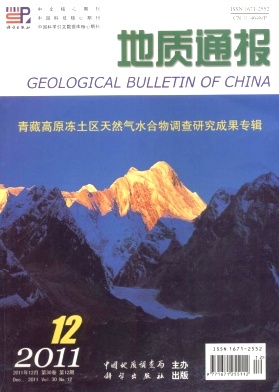TANG Jin-rong1,2, SU Xin1, XU Zhen-qiang3, ZHU You-hai4, WU Neng-you5. New progress of the international gas hydrate exploraton and development[J]. Geological Bulletin of China, 2011, 30(12): 1927-1933.
| Citation: |
TANG Jin-rong1,2, SU Xin1, XU Zhen-qiang3, ZHU You-hai4, WU Neng-you5. New progress of the international gas hydrate exploraton and development[J]. Geological Bulletin of China, 2011, 30(12): 1927-1933.
|
New progress of the international gas hydrate exploraton and development
-
1. School of Marine Sciences,China University of Geosciences,Beijing 100083,China;2. Development Research Center, China Geological Survey, Beijing 100037,China;3. China Geological Survey, Beijing 100037,China;4. Institute of Mineral Resources, Chinese Academy of Geological Sciences, Beijing 100037, China;5. Guangzhou Center for Gas Hydrate Research, Chinese Academy of Sciences, Guangzhou 510640, Guangdong, China
-
Abstract
This paper provided brief information about the 7th International Conference on Gas Hydrate (7th ICGH) held at the Edinburgh, United Kingdom, from 17-21 July 2011. Prof. Thomas F.R. talked about how the famous scientist David devoted himself to scientific discovery and application, and how he found gas hydrates in the chemical laboratory 200 years ago. Canadian Prof. Ripmeeste introduced the results dealing with experimental simulation study on guest gas hydrate and the interaction process of hydrate formation and decomposition. He pointed out that the study on the decomposition processes in different scales became a challenge. Prof. Suess summarized three study stages in the last 25 years: “from a policy of avoiding gas hydrate to emphasizing deliberate drilling for it”, “from exploiting gas hydrates as energy to considering exchange of CO2 for CH4 hydrates”, “from pursuing methane-hydrate reserves to documenting release of methane from destabilization in marginal seas”. Kurihara from Waseda University, Japan, introduced the results of the past and ongoing research and development, including methods of digital simulation, classification of methane gas reservoir, and case studies; and he discussed the feasibility of commercial development and the challenges of methane hydrate. Sloan described four conceptual pictures of hydrate blockages, and suggested that two challenges in the future: interactions between flow assurance areas, and the flow assurance concepts are illustrated beyond the pipeline, to a case of deepwater well blowout containment.
-

-
-
Access History







 DownLoad:
DownLoad: